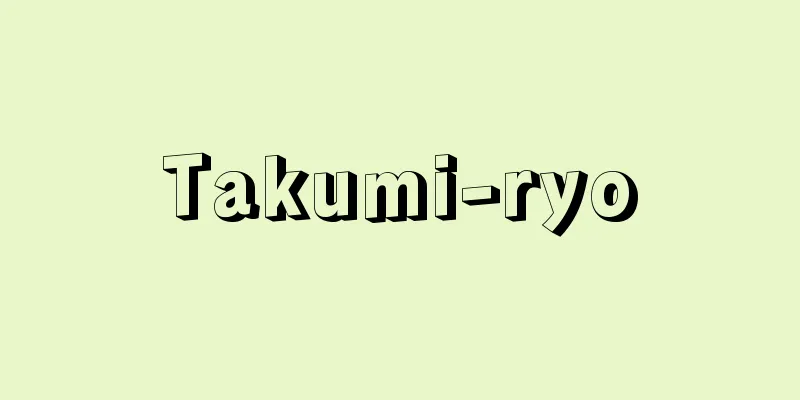Wei

|
(1) One of the Seven Warring States of China. Divided Jin into three parts and became independent in 453 BC. In 403 BC, it was ranked as a feudal lord by King Zhou. It ruled over most of Shanxi and initially had its capital in Anyi (now Xia County, Shanxi Province), but later moved it to Daliang (now Kaifeng, Henan Province). For this reason, it was also called Liang. It was destroyed by Qin in 225 BC. (2) One of the Three Kingdoms of China. Lasted from 220 to 265 BC. At the end of the Later Han Dynasty, Cao Cao took control of the Han Dynasty and unified northern China. His son Cao Pi (Emperor Wen) seized the throne and founded a new dynasty. It also had deep ties with Wa, and appointed Himiko, the queen of Yamataikoku, as the pro-Wei Wa king. It had its capital in Luoyang and was the most powerful of the three kingdoms. The power of the Sima clan gradually increased, and in the fifth generation, the throne was taken by Sima Yan (Emperor Wu of the Western Jin Dynasty). (3) One of the Northern Dynasties of China. Also known as the Northern Wei or Later Wei. Lasted from 386 to 534. The Xianbei Tuoba clan took advantage of the collapse of the Former Qin Dynasty to establish a state, with Pingcheng (now Datong, Shanxi Province) as its capital. In 439, it unified northern China, and came into conflict with the Southern Song Dynasty, ushering in the era of the Northern and Southern Dynasties. At the end of the 5th century, Emperor Xiaowen moved the capital to Luoyang, promoted a policy of Sinification, and implemented the Equal Field Law. Successive kings also revered Buddhism, and opened stone caves such as those in Yungang and Longmen. However, in the 6th century, civil war broke out, and real power was transferred to the generals, splitting the state into the Eastern and Western Wei dynasties. These are called the Eastern Wei dynasty (534-550) and the Western Wei dynasty (534-556). The Gao and Yuwen families held real power, and eventually seized the throne and founded the states of Qi (Northern Qi) and Zhou (Northern Zhou), respectively. →Related items Wuhuan | Wei | Han | Wei, Jin, Northern and Southern Dynasties period | Goguryeo | Sixteen Kingdoms of Five Hus | Three Kingdoms period (China) | Tsukasa Ma Yi | Rou Ran | Spring and Autumn Warring States Period | Shu | Seven Heroes of the Sengoku Period | Daiyao | Tun Tian | Prefectural Military System | Li | Liang | Liang Source : Heibonsha Encyclopedia About MyPedia Information |
|
(1)中国,戦国七雄の一つ。晋を三分して,前453年自立。前403年には周王により諸侯に列せられた。山西の大部分を領有,初め安邑(現,山西省夏県)に都したが,のち大梁(現,河南省開封市)に移る。よって梁とも呼ばれた。前225年秦に滅ぼされる。(2)中国,三国の一つ。220年―265年存続。後漢末に曹操が漢朝の実権をにぎり,華北を統一。子の曹丕(そうひ)(文帝)は帝位を奪って新しい王朝を開く。倭との関係も深く,邪馬台国の女王卑弥呼(ひみこ)を親魏倭王に任じた。洛陽に都し,三国のうち最も強大であった。やがて司馬氏の勢力が高まり,5代にして司馬炎(西晋の武帝)に帝位を奪われる。(3)中国,北朝の一つ。北魏または後魏とも。386年―534年存続。鮮卑の拓跋(たくばつ)氏が前秦の瓦解に乗じて建国,平城(現,山西省大同)を都とした。439年華北を統一,南朝の宋と対立し,南北朝の時代を現出する。5世紀末孝文帝は洛陽に遷都,漢化政策をすすめ,均田法などを施行。また歴代諸王は仏教を尊信し,雲岡,竜門などの石窟を開く。しかし6世紀には内乱が起こって実権は将軍たちの手に移り,東西に分裂。これを東魏(534年―550年),西魏(534年―556年)という。それぞれ高氏と宇文氏が実権をにぎり,やがて帝位を奪って斉(北斉)および周(北周)を建国する。 →関連項目烏桓|衛|漢|魏晋南北朝時代|高句麗|五胡十六国|三国時代(中国)|司馬懿|柔然|春秋戦国時代|蜀|戦国の七雄|臺與|屯田|府兵制|李【かい】|涼|梁 出典 株式会社平凡社百科事典マイペディアについて 情報 |
<<: Ghee - Ghee (English spelling)
Recommend
Seihei Sando storybook - Seihei Sando storybook
A collection of short stories in colloquial Chine...
Smythson, R.
...Alberti applied a design of a combination of o...
Guinea baboon - giniahhihi
→ Savannah Baboon Source: Shogakukan Encyclopedia...
Reduced alcohol - reduced alcohol
...The name of the product obtained by each manuf...
Iruka - Dolphin
The title of a Kōwaka dance piece. Also known as K...
IHF (audio) - IHF
…For example, it is displayed as 3.0μV (S/N50dB)....
Neşrī (English spelling)
…With the rise of the Ottoman Empire, the activit...
Nuclear fission reactor
...The on-site emergency power source will be a b...
da Ponte, L. (English spelling) daPonteL
The opera was first performed in October of that ...
Abe tribe mountain building movement
...Masao Ushikui proposed this orogeny (1955), an...
Aphelandra squarrosa (English spelling) Aphelandrasquarrosa
… [Takabayashi Masatoshi]. … *Some of the termino...
Ukiko - Ukiko
→ Itome Source : Heibonsha Encyclopedia About MyPe...
Wedge planthopper - Wedge planthopper
...It is distributed in Honshu, Shikoku, and Kyus...
Tatsuta Festival
This is one of the rituals prescribed in the Shint...
Chondrodendron cardicans
… [Susumu Terabayashi]. … *Some of the terminolog...









